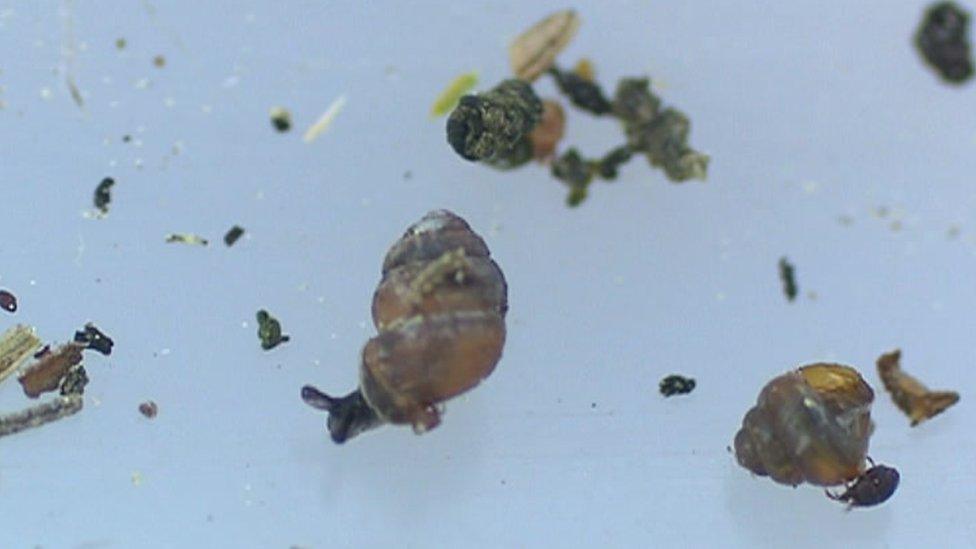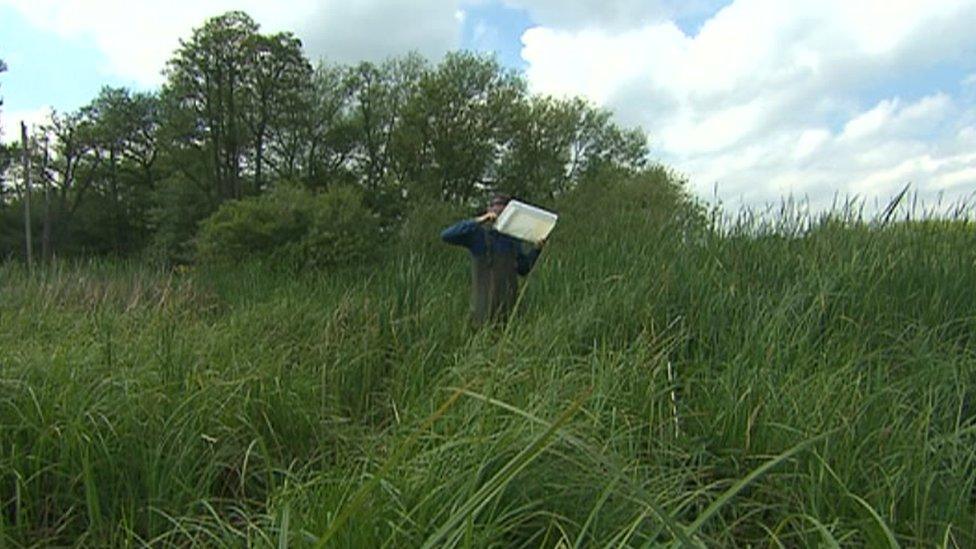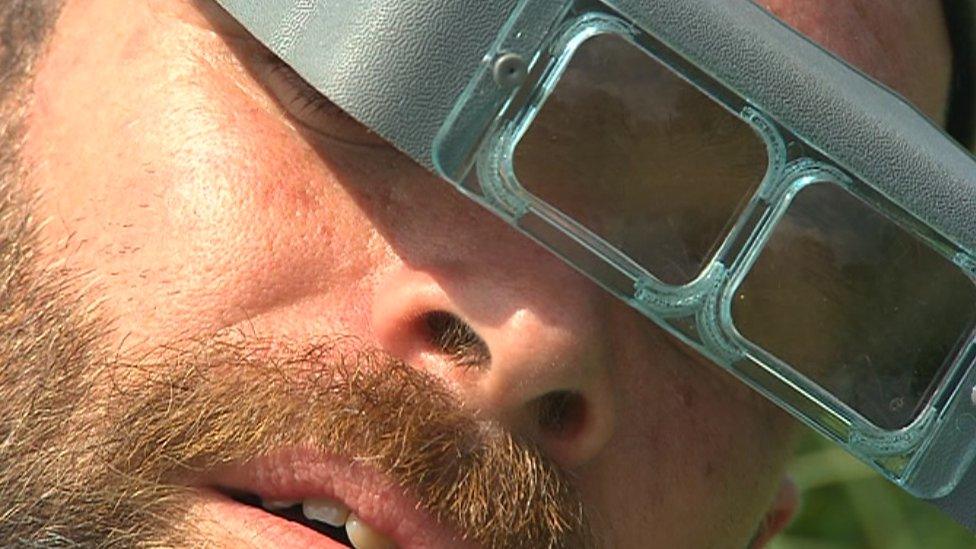The seed-sized snail that nearly stopped Newbury bypass
- Published

The Desmoulin's whorl - endangered and newly discovered in the Midlands
I am pretty sure the Desmoulin's whorl snail is the tiniest creature I have filmed for TV, but it turns out I have some excellent snail-wrangling skills.
It is the size of a pinhead or seed and that is usually all they look like. Luckily, one of the snails we collected was a bit of an explorer and decided to make a break for it on camera. To see one actually out of its shell and moving was just amazing. It really is a tiny, tiny snail. Perfect in every way, just miniature.
Environmental Scientist Dr David Gasca who was helping us film the creatures was beside himself with excitement - he is pretty sure no one has filmed one moving before.
Fungi scrapers
Sadly, you need a microscope rather than a TV camera to get a good close up of its teeth which are pretty spectacular. They use them to scrape up the fungi on which they feed as they move along reedy plants at the edge of boggy water.

Reedy plants at the edge of Shropshire’s meres are the soggy spots where you find the snails
So no teeth, but I am certainly one of a select few to even see the snail here in the Midlands. That is because until the team of which Dr Gasca is part came along, nobody even knew they lived outside the south of the country. Even better, the newly discovered sites in the Midlands, predominately in Shropshire's meres, contain relatively big snail populations.
The species, though, is considered rare in Europe, with the best populations found in the UK. But even here it is on the endangered list. Famously, it is the snail that delayed the construction of Berkshire's Newbury bypass. After a lengthy mollusc-related legal battle, the snail was actually moved out of the way of the road. Entire chunks of the landscape were dug up and shifted to a new location.
Declining populations
Twenty years on and it is not clear what happened to the snails there. Some claim the population has crashed, others that there is a natural (and apparently very large) swing in numbers. But overall the known populations in the south appear to be declining.

Magnifying goggles are useful to sort the snails from seeds, stones or dirt
Discovering new populations of endangered species, then, is always great news, but the Desmoulin's is so tiny, does it really matter?
Well, yes. Their presence is a sign the meres of Shropshire are healthy, vibrant habitats. This snail sits at an interesting point in the ecosystem, tiny from our point of view, but large from the point of view of an iceberg of minute organisms we rarely think about, but essential to this environment.
For me this discovery is as exciting as finding a new population of elephants, tigers or pandas. Also, like all the best endangered species, I think they are really, really cute.